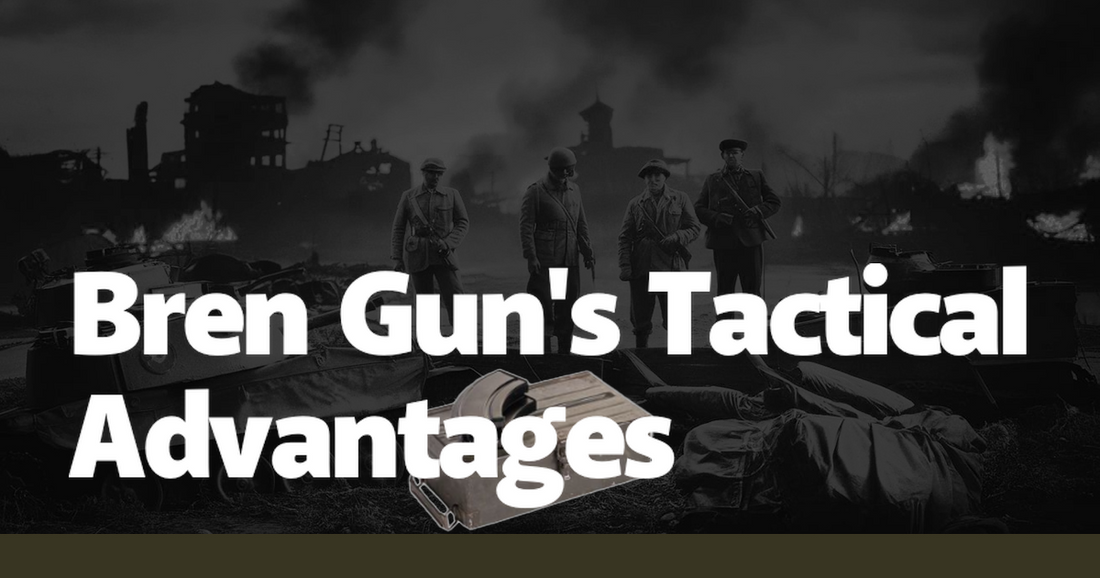The Bren Gun, a symbol of British military ingenuity, stands out as a paragon of tactical advantage in the theater of war. Developed in the 1930s, this light machine gun became a cornerstone of British and Commonwealth infantry units throughout World War II and beyond. Its design, inspired by the Czech ZB vz. 26, was refined to meet the rigorous demands of modern warfare. The Bren's robust construction, combined with its exceptional reliability and accuracy, made it a favored weapon among soldiers who relied on it in the most harrowing of combat situations.
One of the Bren Gun’s primary tactical advantages was its unparalleled reliability in adverse conditions. Soldiers often found themselves in the trenches, jungles, and deserts, where maintaining weapon functionality was a matter of life and death. The Bren's gas-operated mechanism, coupled with its meticulous craftsmanship, ensured it could withstand mud, sand, and other environmental challenges. Anecdotes from the North African campaign highlight how the Bren continued to fire accurately even after being exposed to the harsh desert sands, a feat that many other contemporary weapons could not achieve.
Accuracy was another hallmark of the Bren Gun, setting it apart from other light machine guns of its era. With a rate of fire of approximately 500 rounds per minute, it provided a perfect balance between volume of fire and control. The top-mounted magazine, although initially seen as a potential hindrance, actually contributed to its steadiness. Soldiers appreciated the weapon’s ability to deliver sustained, precise fire at both short and long ranges. During the Battle of Normandy, British infantry units effectively used the Bren to suppress enemy positions, allowing for strategic advances and minimizing casualties.
The versatility of the Bren Gun also contributed significantly to its tactical superiority. It could be deployed in a variety of roles, from providing suppressive fire during infantry assaults to being mounted on vehicles for mobile support. Its quick-change barrel feature allowed soldiers to maintain a high rate of fire without the risk of overheating, a critical factor in prolonged engagements. In the jungles of Burma, the ability to swiftly change barrels under fire was a lifesaver, enabling continuous pressure on Japanese forces during intense skirmishes.
Mobility was another key factor where the Bren Gun excelled. Weighing around 25 pounds with a full magazine, it was relatively light for a machine gun, allowing infantry units to maneuver with greater ease. This mobility was crucial in the fast-paced, fluid battles of World War II, where the ability to quickly reposition and adapt to changing situations often determined the outcome of engagements. The Bren’s portability was particularly advantageous during the rapid advances across Europe following D-Day, where speed and flexibility were paramount.
The psychological impact of the Bren Gun on both friend and foe cannot be overstated. For Allied soldiers, the distinctive sound of the Bren provided a sense of security and confidence, knowing they had a reliable and powerful weapon at their disposal. Conversely, for enemy troops, the sound of a Bren Gun opening fire was a harbinger of impending suppression and potential defeat. Veterans often recounted how the mere presence of a Bren in their squad boosted morale, creating a psychological edge that was just as important as the physical firepower it delivered.
Maintenance and ease of use were also significant tactical advantages of the Bren Gun. Its design allowed for straightforward disassembly and cleaning, which was essential for maintaining operational readiness in the field. Soldiers could be quickly trained to handle and maintain the Bren, ensuring that even new recruits could effectively use the weapon in combat. This ease of maintenance meant that the Bren could sustain prolonged operations without the need for extensive logistical support, a crucial factor in the extended campaigns of World War II.
The legacy of the Bren Gun extends beyond its immediate tactical advantages. It set a standard for light machine guns that influenced subsequent designs and doctrines. The principles of reliability, accuracy, versatility, and mobility that were embodied in the Bren continued to shape military thinking long after the weapon itself was retired from active service. Its impact on infantry tactics and its role in key historical moments underscore the Bren Gun’s enduring significance in military history.
In conclusion, the Bren Gun’s tactical advantages were manifold and profound. Its reliability in adverse conditions, accuracy, versatility, mobility, psychological impact, ease of maintenance, and lasting legacy all contributed to its status as a legendary weapon. The Bren Gun not only provided a critical edge in numerous battles but also left an indelible mark on the development of military firearms and tactics. For those who wielded it, the Bren was more than just a weapon; it was a trusted companion in the most challenging of circumstances, a symbol of resilience and tactical superiority.

